The Sony A7C was launched back in September 2020 and was labelled as the world’s smallest full-frame mirrorless camera.
July 2023 saw the launch of the Sony A6700 APS-C mirrorless camera that packs all of the latest AI technology that you would expect from a camera launched in 2023.
In this article I’ll be comparing in detail how these two mirrorless cameras stack up against each other, and hopefully helping you to decide which camera is best suited to your needs.

Table of Contents[Hide][Show]
- Key Spec Comparison
- Sensor and Processor
- ISO Sensitivity
- Still Image Recording Formats
- Creative Look
- APS-C / Super 35 Mode
- Shutter
- Menu and Touch Control
- Full Time DMF
- Focus Bracketing
- Memory Cards
- Battery Life & USB Charging
- Load / Save Settings (CAMSET)
- Firmware Updates
- What’s in the Box
- Price
- Conclusion
- Reviews
- Sony A7C Guides & Resources
- Sony A6700 Guides & Resources
Key Spec Comparison
Before we get into the details, here’s a quick look at how the key specifications compare.
| Specification | Sony A7C | Sony A6700 |
|---|---|---|
| Sensor: | 24.2 MP 35-mm full frame back-illuminated Exmor R CMOS | 26.0 MP APS-C back-illuminated Exmor R CMOS |
| Processor: | BIONZ X | BIONZ XR |
| Stabilization (IBIS): | Yes (5-axis) | Yes (5-axis) |
| Shutter: | Electronic / Mechanical (EFCS) | Electronic / Mechanical |
| Electronic Viewfinder (EVF): | 2 359 296 dots | 2 359 296 dots |
| Display (LCD): | 921,600 dots vari-angle | 1 036 800 dots vari-angle |
| ISO Sensitivity Stills: | ISO 100-51200 (expandable: ISO 50-204800) | ISO 100-32000 (expandable to ISO 50-102400) |
| ISO Sensitivity Movies: | 100-51200 (expandable: ISO 100-102400) | ISO 100-32000 |
| Movie Resolution Max: | 4K30p HD / 120p | 4k60p / 4k120p |
| Shutter Speed Still Images: | 1/4000 to 30 sec, Bulb (1/8000 electronic). | 1/4000 to 30 sec, Bulb (1/8000 electronic). |
| Max Frames Per Second: | 10 FPS | 11 FPS |
| Memory Cards: | Single slot. UHS-I/II SD cards | Single slot. UHS-I/II SD cards |
| Price (MRRP) Body Only: | $1,798.00 / £1,699.00 | $1,398.00 / £1,449.00 |
| Price Check: | B&H Photo | Amazon | B&H Photo | Amazon |
Sensor and Processor
The first and probably the most significant difference between these two cameras, is that the A7C has a full-frame sensor whereas the A6700 has a smaller APS-C sized sensor.
Full-frame sensors are physically larger than APS-C sensors but bigger isn’t always better and each format has its own distinct advantages.
The table below compares the size of each cameras sensor.
| Camera | Sensor Size | Megapixels | Resolution (3:2) |
|---|---|---|---|
| Sony A7C | Full-Frame (35.6 x 23.8 mm) | 24.2 MP | 6000 x 4000 |
| Sony A6700 | APS-C size (23.3 mm × 15.5 mm) | 26.0 MP | 6192 × 4128 |
The A7C features a 24.2 megapixel full-frame 35mm back-illuminated Exmor R CMOS sensor that provides high-speed readout, high sensitivity, low noise, and highly accurate color reproduction.

The Sony A6700 features a physically smaller but slightly larger megapixel 26.0 MP APS-C Back-illuminated Exmor R CMOS sensor that can also be found in the Sony FX30 cinema camera.
The full-frame sensor in the A7C helps to give this camera a one stop advantage when it comes to focusing in low-light.
- A7C: EV-4 to EV20 (ISO 100 equivalent with F2.0 lens attached)
- A6700: EV-3 to EV20 (ISO 100 equivalent with F2.0 lens attached)
The A6700 features the latest BIONZ XR™ processor that delivers up to eight times more processing power than the older BIONZ X found in the A7C.
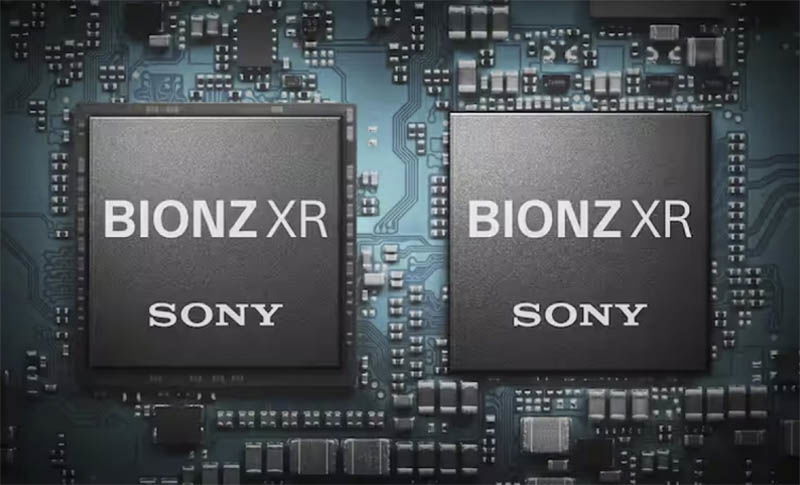
ISO Sensitivity
The A7C has a wider ISO range largely thanks to its full-frame sensor which has better light gathering capabilities. This could be a deciding factor if you shoot a lot in low light environments.
| Sony A7C | Sony A6700 | |
|---|---|---|
| Normal ISO (Stills): | ISO 100-51200 | ISO 100-32,000 |
| Expanded ISO (Stills): | ISO 50-204800 | ISO 50-102,400 |
| Normal ISO (Movies): | ISO 100-51200 | ISO 100-32,000 |
| Expanded ISO (Movies): | ISO 100-102400 | ISO 100-32,000 |
Still Image Recording Formats
The A7C offers compressed and uncompressed RAW 14-bit files along with JPEGs. However, this is limited to 12 bits during compressed RAW continuous shooting, BULB exposure, or when Long Exposure Noise Reduction is activated.
The Sony A6700 does not support uncompressed RAW but does supports JPEG and Compressed RAW. It also adds support for Lossless Compressed RAW and HEIF (High Efficiency Image File) format.
The A6700 also has a light image quality selection that generates less data for JPEG and HEIF images.
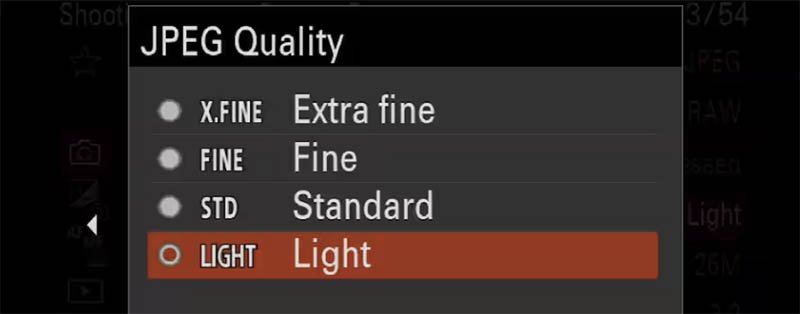
The A6700 also supports 14-bit RAW files when shooting with long exposure noise reduction and bulb mode, whereas the A7C drops down to 12-bit when shooting in these modes.
Movies
The A7C can record 4K24p from the full width of its sensor, so there’s no crop. A small 1.2x crop is applied when shooting at 30p. Video footage is captured in 8-bit 4:2:0 internal up to 100Mbps. HDMI output is limited to 8-bit as well.
The A6700 can shoot 4K60p with a small 1.04x crop. The camera also supports high-quality XAVC S-I (All-Intra) and XAVC HS formats with 10-bit 4:2:2 color sampling.
The A6700 also supports high frame rate recording of up to 120p for 4K QFHD (3840 x 2160) but this is with a 1.58x crop. S&Q mode also enables recording of slow or quick motion sequences in camera with up to 240 FPS supported in Full HD. The A7C can shoot higher frame rates of up to 120p in Full HD.
Both cameras support picture profiles such as S-Log2 and S-Log3 but the A6700 goes one step further by adding support for S-Cinetone.
A HDMI micro connector (Type-D) is present on both cameras along with 3.5mm stereo microphone and headphone jacks.
Neither camera has a record time limit, so you can shoot until your battery is flat or memory card is full.
Being the much newer camera, the Sony A6700 includes many more video specific features that you won’t find on the A7C, let’s take a closer look at these now.
Stills / Movies / S&Q Dial
The A6700 features a dedicated dial on the camera that allows you to have 3 dedicated memories for still, movies and S&Q.
Focus Map
Focus Map lets you easily visualize depth of field when you’re shooting video. When in use, a focus (depth map) is overlaid on a display of the live view in real time, so that you can easily see which areas are in or out of focus.
AF Assist
While shooting a movie with auto focus, you can change the subject in focus by operating the focus ring of the lens.
Real-time Tracking for Movies
AI-based Real-time Tracking provides a dramatic improvement in Real-time Tracking performance, automatically recognising, tracking, and focusing on the eyes of a specified subject. Tracking can also be initiated by touch.
Active Mode Enhanced Movie Image Stabilization
Active Mode provides additional image stabilization for handheld movie shooting. The A6700 has the ability to accurately measure camera shake which is then precisely compensated for optically. However, using this feature will result in a 1.13x crop.
Breathing Compensation
Breathing Compensation basically crops and resizes the video to cancel-out any change in a lens’s angle-of-view (AoV) as it focuses. In other words, there’s no distracting change of framing as you refocus.
However, this mode only works with select Sony lenses because the camera needs a profile of the breathing characteristics. You can find a full list of lenses compatible with focus breathing in my Sony A6700 Lenses Guide.
Here’s a video from Sony to demonstrate Breathing Compensation on the a7IV.
Import User LUT files
The A6700 allows you to import a custom LUT (Look Up Table) that can be applied to the camera’s monitor while recording. This provides a preview of how your footage will look in post-processing whilst you are still shooting.
Auto Framing
The Auto Framing function automatically crops and re-frames the image while using AI to track your subject.
In-camera Time-Lapse / Interval Shooting
The in-camera time-lapse function allows you to create time-lapse videos within the camera itself. Although the A7C includes an interval timer, it does not compose the time-lapse for you in-camera, this needs to be done in post.
Stabilization
Both cameras feature Sony’s 5-axis In-Body Stabilization (IBIS) which offers the equivalent to a 5-step faster shutter speed setting.
The 5-axis in-body optical image stabilization mechanism detects and compensates for camera shake along five different axes, including angular (pitch and yaw), horizontal, vertical and rotational, for stabilization equivalent to a 5-step faster shutter speed setting.
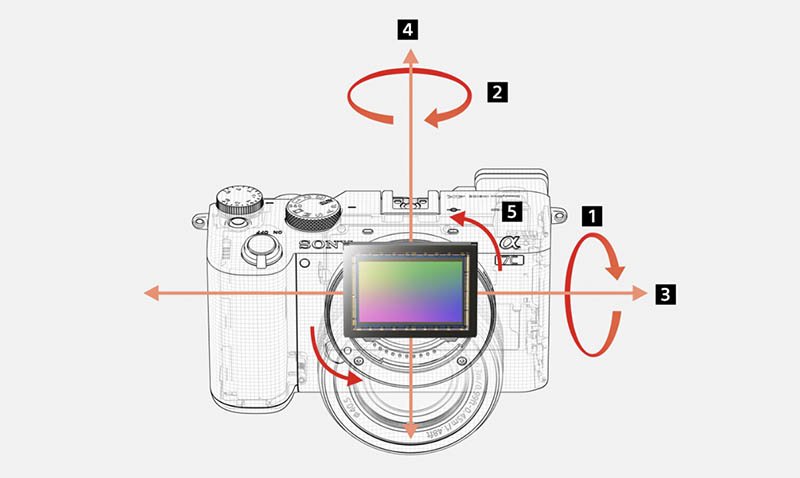
As mentioned earlier, the A6700 also features Active Mode Enhanced Movie Image Stabilization which is not available on the A7C.
Both cameras also support gyro correction where gyro data is saved into the video file so that you can apply more powerful digital correction (or less correction, less crop), in Sony’s Catalyst software.
Creative Look
The Sony A6700 gets the newer “Creative Look” that is designed for both stills and movies. With Creative Look you can choose the finish of an image by selecting a preferred look from 10 preinstalled looks. In addition, you can fine-tune the contrast, highlights, shadows, fade, saturation, sharpness, sharpness range, and clarity for each “Look.”
The Sony A7C has the previous “Creative Style” settings which are very similar but the adjustments for each style are limited to contrast, saturation, and sharpness making this more suitable to stills than movies.
APS-C / Super 35 Mode
The A7C features an APS-C / Super 35 Mode that allows you to shoot with full-frame lenses with a crop factor of 1.5x, or attach an APS-C lens and not worry about seeing any black bars because it doesn’t cover the full-frame sensor.
When shooting in this mode the resolution drops to 10 MP (3936×2624).
You won’t find an APS-C / Super 35 Mode on the A6700 because it’s an APS-C camera and this is the default shooting mode.
Autofocus
The autofocus system in the A7C was excellent back in 2020 when the camera was released and it’s still great today, but it has unfortunately missed out on recent updates like real-time tracking, bird eye AF, eye tracking in movies and additional subject detection.
The A6700 is equipped with an AI processing unit that greatly increases its AF performance compared to the A7C. This includes more accurate subject recognition and a wider range of subjects.

In addition to humans and animals that the A7C is capable of recognizing, the A6700 can recognize birds, insects, cars, trains and airplanes.
Phase & Contrast Detection Points
The A7C features 693 phase detection points in full-frame mode covering approximately 93% of the image area. In APS-C mode with a full frame lens this drops to 299 phase detection points and with an APS-C lens this drops further to 221 points. There are also 425 contrast detection points.

The A6700 improves on this slightly with up to 759 phase detection points, covering approximately 93% of the image area when shooting stills. For shooting movies this reduces to a maximum of 495 points.

Lowlight AF Performance
As mentioned already, the full-frame sensor in the A7C helps to give this camera a one stop advantage when it comes to focusing in low-light.
- A7C: EV-4 to EV20 (ISO 100 equivalent with F2.0 lens attached)
- A6700: EV-3 to EV 20 (ISO 100 equivalent with F2.0 lens attached)
Phase Detect Autofocus Aperture Limit
With the A7C when you are shooting with an F-value greater than F11 in [Continuous Shooting: Hi+], [Continuous Shooting: Hi] or [Continuous Shooting: Mid] mode, the slower contrast detection is used and the focus is locked to the setting in the first shot.
With the A6700 you can shoot with phase detect autofocus all the way down to F22 before contrast detection kicks in and the focus is locked to the setting in the first shot.
Shutter
Both the A7C and A6700 feature a Mechanical / Electronic shutter.
However, the Mechanical Shutter on the A7C is actually an Electronic First Curtain (EFCS) shutter, whereas the A6700 has a full mechanical shutter.
When utilizing the mechanical shutter the speed is limited on both cameras to a maximum of 1/4000s. When shooting with the electronic shutter the maximum speed increases to 1/8000s.
The A6700 also supports Variable Shutter that allows users to manually adjust the shutter speed and observe the effects of flickering on the camera’s monitor. This feature is available for both still photography and movies.
Both cameras support anti-flicker shooting which can time the shooting of images to moments when flickering will have less of an impact by detecting the flickering frequency automatically. However, the A7C only supports anti-flicker for stills, the A6700 supports it for both stills and movies.
Drive Speed & Buffer
The Sony A7C supports a maximum continuous drive speed of 10 frames per second in Hi+ drive mode with both the mechanical and the electronic shutter. But this speed is only achievable when shooting compressed RAW or JPEG, it drops to around 6 FPS when shooting uncompressed RAW.
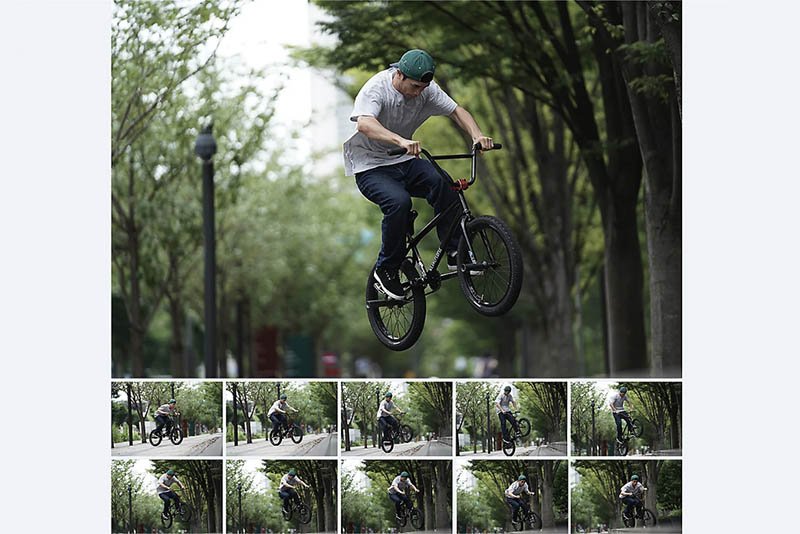
The A6700 supports a maximum frame rate of 11 frames per second with both its mechanical and electronic shutter. If you shoot in lossless compressed RAW the frame rate will drop but it’s not clear what to. I’ll hopefully be able to test this once I have the camera in my hands.
Buffer
If you shoot a lot of action and continuous bursts, then the number of frames that you can shoot before hitting the buffer will be an important consideration.
The numbers in the table below are when shooting in Hi+ drive mode and utilizing a fast UHS-II memory card.
| JPEG Extra Fine | JPEG Fine | Uncompressed RAW | Compressed RAW | Lossless Compressed RAW | HEIF | |
|---|---|---|---|---|---|---|
| A7C | 215 | 223 | 45 | 115 | – | – |
| A6700 | 143 | 1000+ | – | 59 | 23 | 1000+ |
The A7C is able to shoot almost double the number of Extra Fine JPEGS and Compressed RAW images before hitting the buffer. However, the A6700 can shoot way more if you are happy to shooting Fine JPEGS or HEIF images.
Electronic Viewfinder and LCD Display
Both cameras feature similar but not quite identical electronic viewfinders (EVF) and LCD displays.
Electronic Viewfinder (EVF)
Each camera features a 2.36 million dot OLED viewfinder but they are not entirely identical.
The magnification on the A6700’s viewfinder is larger at 0.70x (full-frame equivalent) compared to 0.59x on the A7C.
Additionally, the A6700 has a longer eye-point of 22mm, while the A7C has a slightly shorter eye-point of 20mm.
| Sony A7C | Sony A6700 | |
|---|---|---|
| EVF Type | 1.0 cm (0.39 type) electronic viewfinder (XGA OLED) | 1.0 cm (0.39 type) electronic viewfinder (XGA OLED) |
| Number of Dots | 2,359,296 dots | 2,359,296 dots |
| Field Coverage | 100 % | 100 % |
| EVF Magnification | Approx. 0.59x (with 50-mm lens at infinity, –1 m-1) | Approx. 1.07x (35 mm camera equivalent: Approx. 0.70x) with 50 mm lens at infinity, -1 m-1 |
| EVF Eyepoint | Approx. 20 mm from the eyepiece lens, 17.5 mm from the eyepiece frame at –1 m-1 (CIPA standard) | Approx. 22 mm from the eyepiece lens, 19.4 mm from the eyepiece frame at -1 m-1 (CIPA standard) |
| Finder Frame Rate Selection | NTSC mode: STD 60fps / HI 120fps, PAL mode: STD 50fps / HI 100fps | NTSC mode: STD 60fps / HI 120fps, PAL mode: STD 50fps / HI 100fps |
LCD Display
Both cameras feature a 2.95 inch (3.0-type) TFT display. The A7C has a resolution of 921,600 dots whereas the A6700 has a slightly higher resolution of 1 036 800 dots.
Both displays are vari-angle touch displays with an opening angle of approx. 176 deg and a rotation angle of approx. 270 deg. This helps you to comfortably shoot from a variety of positions.
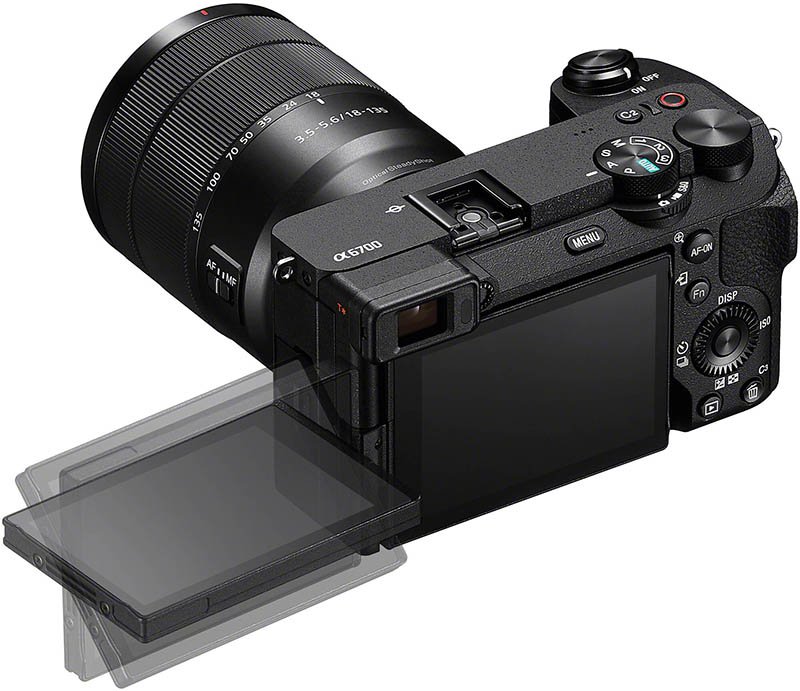
Menu and Touch Control
The A7C features an older and less intuitive menu design that is definitely showing its age.
The A6700 benefits from the latest menu design and improved touch functionality that have been incorporated into higher-end cameras like the Sony a7RV.
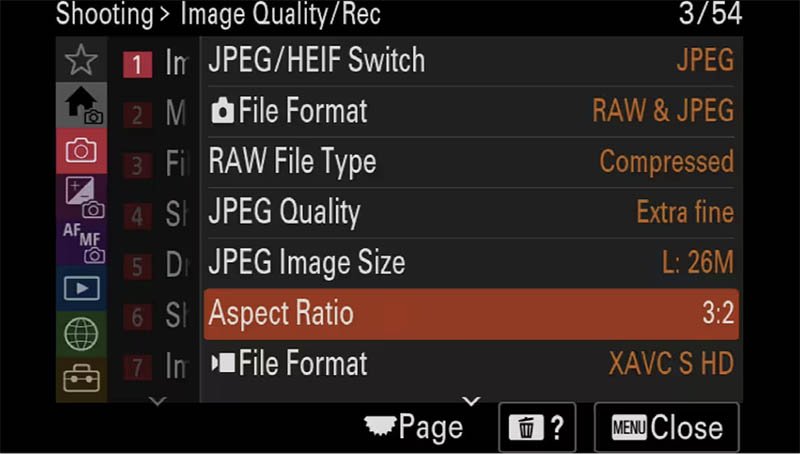
Touch control on the A7C is limited to selecting the focus point and touch shutter. With the A6700 you can now navigate the menus by touch and swiping in from the left or right edge of the shooting display reveals touch icons that allow quick changes to the shooting mode and other settings. The function (Fn) menu can also be displayed by a simple swipe-up.
Camera Body & Controls
The Sony A7C despite being the smallest full-frame mirrorless camera in the world is still a little larger than the A6700 when looking at its width and height, but the A6700 has a much larger grip.
The dimensions and weights of each camera are as follows:
- A7C: W/H/D: 124.0 mm x 71.1 mm x 53.5 mm, (approx. 509 g / 1.12 lbs. with battery and memory card)
- A6700: W/H/D: 122.0 x 69.0 x 75.1 mm, (approx. 493 g / 1.09 lbs. with battery and memory card)
The Sony A7C is offered in two colors, black and black/silver. The A6700 is available in black only.
Sony A7C


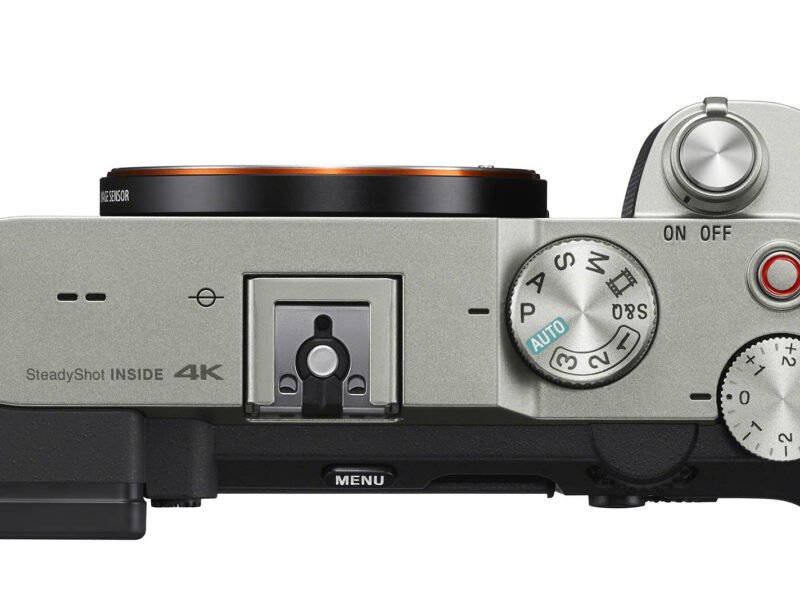
Sony A6700

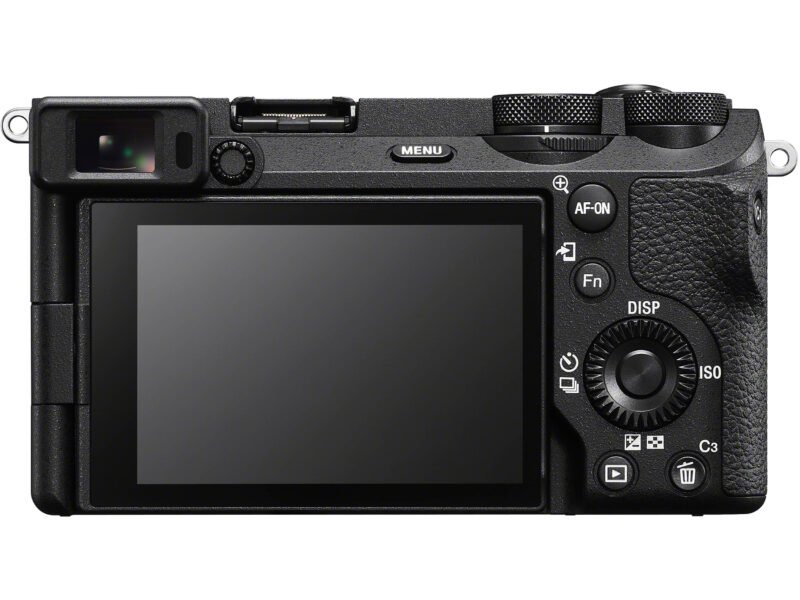

Looking more closely at the front of each camera you’ll see that the A6700 features a front dial on the grip which is unfortunately missing on the A7C.
On the top of the A6700 you will find a dedicated movie record button and C2 (custom) button. There’s also an extra dial on the A6700 below the main mode dial that allows you to have 3 dedicated memories for stills, movies and S&Q.
On top of the A7C you’ll also find the movie record button but no customizable buttons. However, it does have a dedicated exposure compensation dial which the A6700 doesn’t.
The rear of each camera is very similar but you’ll find an extra custom button on the right side of the A6700 and larger rear dial at the top.
The grip on the A6700 is much larger than the A7C’s grip, which should make this the more comfortable camera to hold for longer time periods or if you are using large zoom lenses like the Sony FE 200-600 (B&H Photo).
Full Time DMF
Full Time DMF is only available on the A6700. This works when shooting stills with AF-C or AF-S autofocus. With DMF you can rotate the lens’s focus ring to switch to manual focus mode at any time. The A7C does not support full-time DMF unless you are using a lens with a dedicated DMF switch.
Focus Bracketing
Focus bracketing is another new feature that you’ll find on the A6700 but not the A7C.
With focus bracketing the A6700 can automatically shoot up to 299 images with sequentially shifted focus points according to intervals and a sequence specified by you. Unfortunately there is no option to automatically combine images in-camera, this needs to be done in post.
This video from Mark Galer explains more about how focus bracketing works with the a7RV, but it’s similar for the A6700.
Memory Cards
Both cameras feature a single memory card slot on the side of the camera that supports UHS-I / II SD cards.
To find out which are the best memory cards to use in the A7C, please visit my Sony A7C Memory Card Guide.
Or visit my Sony A6700 Memory Card Guide to learn more about the best memory cards for the A6700.
Battery Life & USB Charging
Both cameras support the Sony NP-FZ100 battery and in-camera charging via USB. However the battery life for shooting stills and movies does vary a little.

With the A7C you can shoot approx. 680 shots (Viewfinder) or approx. 740 shots (LCD monitor) (CIPA standard) with a full battery. The A6700 can achieve approx. 550 shots (Viewfinder) and approx. 570 shots (LCD monitor) (CIPA standard).
For actual movie recording the A7C will record for approx. 140 min (Viewfinder) or approx. 140 min (LCD monitor) (CIPA standard). The A6700 will get you approx. 95 min actual (Viewfinder) or approx. 100 min (LCD monitor) (CIPA standard).
The A7C comes out slightly on top here, this is probably because of the faster processor and additional AI processor in the A6700 requiring a little more juice.
Both cameras support charging via their USB-C ports but the A6700 also supports USB PD (Power Delivery), enabling faster in-camera battery charging.
Connectivity
Both cameras feature similar connectivity options.
- 2.4 / 5 Ghz Wi-Fi
- Bluetooth standard Ver. 4.1 (A7C)
- A6700 Bluetooth standard Ver. 4.2 (A6700)
- Micro HDMI port (type D micro jack)
- SuperSpeed USB-C 5 Gbps (USB 3.2)
- Microphone jack (3.5 mm)
- Headphone jack (3.5 mm)
- Multi Interface (MI) Shoe with digital audio
The A7C can be controlled remotely using the Imaging Edge Mobile App but functionality is limited.
The a6700 supports Sony’s newer Creators App for remote control and file management.
The Sony RMT-P1BT Bluetooth Remote (B&H Photo | Amazon) is also supported by both cameras.
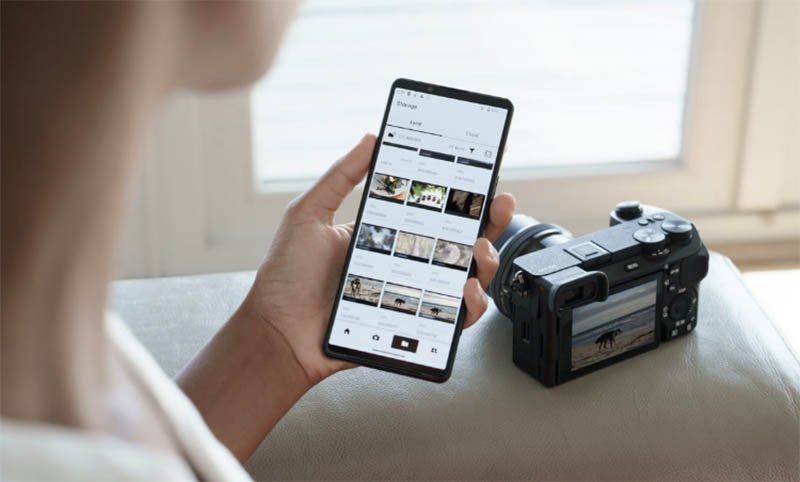
Live Streaming / Webcam
The Sony A7C can be used as a webcam when using Sony’s Imaging Edge Webcam software but the resolution is limited to 1,024 × 576 pixels.
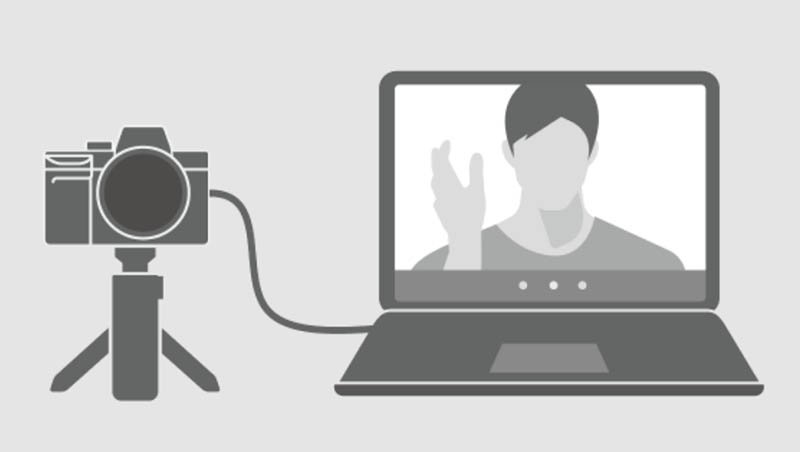
With the A6700 you just need to connect the camera to a computer or smartphone via USB, then select “Live Stream (USB Streaming)”.
The A6700 can also function as a 4K (2160p) webcam with advanced AF that makes online meetings and live streaming events even smoother.
Load / Save Settings (CAMSET)
The A6700 allows you to save/load camera settings to/from a memory card. You can save up to 10 settings per memory card. You can also load settings from another camera of the same model.
The A7C offers a more basic option that allows you to save up to 4 (M1 through M4) to a memory card, then recall the settings using the mode dial.
Firmware Updates
Updating the Sony A7C firmware requires you to connect the camera to your computer via USB. For Mac OS users this is a nightmare as it triggers security flags and can be very difficult to install.
Thankfully the A6700 allows firmware updates via memory card which is a lot easier.
What’s in the Box
The box contents of each camera are similar except the A7C includes a USB adapter and a USB-A to USB-C cable. Sony has excluded the USB Adaptor and Micro USB cable (B&H Photo) from the A6700. So hopefully you already have one at home.
| Sony A7C | Sony A6700 |
|---|---|
| Sony A7C Body | Sony A6700 Body |
| Rechargeable Battery: NP-FZ100 | Rechargeable Battery NP-FZ100 |
| AC Adaptor: AC-UUD12 | Shoulder strap |
| Shoulder strap | Body cap |
| Body cap | Accessory shoe cap |
| Accessory shoe cap | Eyepiece cup |
| USB-A to USB-C cable (USB 3.2) |
Price
The full-frame sensor in the A7C helps to make this the more expensive camera, despite it not being the most technically advanced camera today.
- The A7C has an MRRP of: $1,798.00 / £1,699.00 (body-only)
- The A6700 has an MRRP of: $1,398.00 / £1,449.00 (body-only)
Please do check the latest prices as there are often deals running, especially on the older A7C.
The cost of the camera body is not your only consideration however, you will also need to think about the cost of purchasing full-frame lenses which are typically more expensive than APS-C lenses.
My Sony E-Mount Lenses List provides a helpful reference for all of the full-frame and APS-C E-mount lens options.
Conclusion
The A7C with its larger full-frame sensor is probably going to be the smarter choice for those looking for great dynamic range and low light image quality.
Whilst the A6700 can’t compete when shooting in low light, being the newest camera it offers a plethora of attractive features such as 4k60p, 10bit internal recording, a much faster processor and AI processor for improved subject tracking.
The smaller sensor in the A6700 also provides access to a large selection of more affordable APS-C lenses whilst still providing the option to mount full-frame lenses if desired.
Here’s a quick refresh of the key advantages that the A7C has over the A6700:
- Full-frame sensor
- ISO 100-51200 (expandable: ISO 50-204800)
- EV-4 to EV20
- Uncompressed RAW file option
- Black/silver body color option
And the key advantages that the A6700 has over the A7C:
- BIONZ XR processor
- 4k60p / 4k120p
- S&Q 240 FPS in FHD
- Active Mode enhanced movie image stabilization
- 3 Memory Recalls + CAMSET
- Lossless RAW & HEIF file formats
- Variable shutter
- Import User LUT files
- 759 PDAF points
- Real-time tracking of birds, insects, cars/trains, and airplanes
- In-camera time-lapse creation
- Auto framing
- Focus breathing
- Focus bracketing
- Focus map (movies)
- AF Assist
- Full-time DMF
- Firmware updates via memory card
Ultimately, the decision between the A7C and A6700 will depend on whether you prioritize sensor size and low light performance, or the advanced video features and superior autofocus capabilities of the A6700. Of course your budget will most likely also play a role, with the A6700 being the more affordable option.
And that’s it for this comparison. Please do let me know in the comments below if you found this comparison helpful or have any questions.
Finally. Please don’t forget to take a look at our friendly Alpha Shooters Community Forum before you leave. Thank you!
Table of Contents[Hide][Show]
- Key Spec Comparison
- Sensor and Processor
- ISO Sensitivity
- Still Image Recording Formats
- Creative Look
- APS-C / Super 35 Mode
- Shutter
- Menu and Touch Control
- Full Time DMF
- Focus Bracketing
- Memory Cards
- Battery Life & USB Charging
- Load / Save Settings (CAMSET)
- Firmware Updates
- What’s in the Box
- Price
- Conclusion
- Reviews
- Sony A7C Guides & Resources
- Sony A6700 Guides & Resources
Reviews
To learn more about these two cameras I’d recommend watching these two reviews from Chris and Jordan.
Sony A7C Guides & Resources
Sony A7C / A7CII / A7CR Forum & Facebook Group
If you are looking for further help and advice on the A7C or would simply like to share your photos and videos, then please head over to our friendly full-frame Forum. If you prefer Facebook then I also run the Sony A7C + A7CII + A7CR Shooters Group.
Sony A6700 Guides & Resources
Sony A6700 Forum & Facebook Group
If you are looking for further help and advice on the A6700 or would simply like to share your photos and videos, then please head over to our friendly APS-C Forum. If you prefer Facebook then I also run the Sony A6700 + A6600 Shooters Group.
Complete Specification Comparison
If you prefer to view comparisons in table format then here’s a complete specification comparison between the Sony A7C and the Sony a6700.
Features
| Feature | Sony A7C | Sony A6700 |
|---|---|---|
| Announced | September 15th, 2020 | July 12th, 2023 |
| Camera Type | Mirrorless | Mirrorless |
| Sensor Size | Full-Frame (35.6 x 23.8 mm) | APS-C (23.3 x 15.5 mm) |
| Sensor Type | BSI Exmor R CMOS | BSI Exmor R CMOS |
| Resolution | 24.2 MP | 26.0 MP |
| Sensor Pixel Size | 5.93µm | 3.76µm |
| Pixel Dimensions | 6000 x 4000 | 6192 x 4128 |
| Image Processor | BIONZ X | BIONZ XR |
| Low Pass Filter | Yes | Yes |
| IBIS (In-Body Image Stabilization) | Yes | Yes |
| Base ISO Stills | ISO 100 | ISO 100 |
| Max Native ISO Stills | ISO 51200 | ISO 32,000 |
| Extended ISOs Stills | ISO 50-204800 | ISO 50-102,400 |
| High-Resolution Sensor Shift | No | No |
| Focus Bracketing | No | Yes |
| Full Time DMF | No | Yes |
| Pre-Shoot Burst Mode | No | No |
| Fastest Shutter Speed (Mechanical Shutter) | 1/4000 sec | 1/4000 sec |
| Fastest Shutter Speed (Electronic Shutter) | 1/8000 sec | 1/8000 sec |
| Longest Shutter Speed | 30 seconds + Bulb | 30 seconds + Bulb |
| Continuous Shooting (Mechanical Shutter) | 10 FPS | 11 FPS |
| Continuous Shooting (Electronic Shutter) | 10 FPS | 11 FPS |
| Notes for High FPS Shooting | The speed of continuous shooting decreases when shooting in uncompressed compressed RAW. | The speed of continuous shooting decreases when shooting in lossless compressed RAW. |
| Buffer Size (RAW Uncompressed) | 45 frames | – |
| Buffer Size (RAW Compressed) | 115 frames | 59 frames |
| Buffer Size (RAW Lossless Compressed) | – | 12 frames |
| Buffer Size (JPEG Extra Fine) | 215 frames | 143 frames |
| Buffer Size (JPEG Fine) | 223 frames | 1000 + frames |
| Buffer Size (HEIF) | – | 1000 + frames |
| Autofocus System | Fast Hybrid AF (phase-detection AF / contrast-detection AF) | Fast Hybrid AF (phase-detection AF / contrast-detection AF) |
| AF Subject Detection | Humans, animals | Humans, animals, birds, insects, cars/trains, and airplanes |
| Autofocus Points | 693 | 759 |
| Maximum Low-Light AF Sensitivity (Standardized to f/2, ISO 100) | -4 EV | -3 EV |
| Standard Flash Sync Speed | 1/160s | 1/160s |
| Curtain to Protect Sensor at Shutdown | No | No |
| Interval Shooting | Yes | Yes |
| Soft Skin Effect (stills / movies) | No | Yes |
| Creative Look | No (Creative Styles) | Yes |
| My Image Style | No | Yes |
| Background Defocus | No | No |
| Face Memory | No | Yes |
Video Specific Features
| Feature | Sony A7C | Sony A6700 |
|---|---|---|
| Maximum Video Bit Depth (Internal) | 8 bits | 10 bits |
| Maximum Video Bit Depth (External) | 8 bits | 10 bits |
| Raw Video | No | No |
| 4K Maximum Frame Rate | 30 FPS | 120 FPS |
| 1080P Maximum Frame Rate | 120 FPS | 240 FPS |
| Additional Video Crop Factor | 1.2x crop at 4K 30p | 1.04x crop at 4K 60p and 1.58x crop at 4K 120p |
| Chroma Subsampling | 4:2:1 | 4:2:2 |
| Video Recording Limit | No | No |
| S-Cinetone | No | Yes |
| Picture Profiles (stills/movies) | Yes | Yes |
| Active Stabilization | No | Yes |
| Focus Breathing Compensation | No | Yes |
| Import User LUT Files | No | Yes |
| AI Auto Framing | No | Yes |
| Focus Map | No | Yes |
| AF Assist | No | Yes |
| Time Code (TC) | Yes | Yes |
| In-Camera Time-Lapse Creation | No | Yes |
| Framing Stabilizer | No | No |
| Product Showcase Set | No | No |
| Cinematic Vlog Setting | No | No |
| Multiple Face Recognition in Intelligent Auto Mode | No | No |
Physical & Other Features
| Feature | Sony A7C | Sony A6700 |
|---|---|---|
| Card Slots | 1 | 1 |
| Slot 1 Type | SD (UHS-II / I) | SD (UHS-II / I) |
| Rear LCD Size (Diagonal) | 3.0 in | 3.0 in |
| Rear LCD Resolution | 921,600 dots | 1.04 million dots |
| Articulating LCD | Fully Articulating | Fully Articulating |
| Touchscreen | Yes | Yes |
| Viewfinder | EVF | EVF |
| Viewfinder Magnification | 0.59x | 1.07x (0.70x FF equiv.) |
| Viewfinder Resolution | 2.36 million dots | 2.36 million dots |
| Viewfinder Coverage | 100% | 100% |
| Voice Memo | No | No |
| Headphone Jack | Yes (3.5mm) | Yes (3.5mm) |
| Microphone Jack | Yes (3.5mm) | Yes (3.5mm) |
| Built-in Microphone | Yes. Stereo | Yes. Stereo |
| Built-in Flash | No | No |
| GPS | No | No |
| Bluetooth | Yes (version 4.1) | Yes (version 4.2) |
| WiFi | Yes (2.4 / 5 Ghz) | Yes (2.4 / 5 Ghz) |
| USB Type | SuperSpeed USB 5Gbps (USB 3.2) | SuperSpeed USB 5Gbps (USB 3.2) |
| Multi Interface Shoe | Yes (with Digital Audio Interface) | Yes (with Digital Audio Interface) |
| Battery Type | NP-FZ100 | NP-FZ100 |
| Battery Life Stills (Viewfinder) | 680 frames (CIPA standard) | 550 frames (CIPA standard) |
| Battery Life Stills (Rear LCD) | 740 frames (CIPA standard) | 570 frames (CIPA standard) |
| Battery Life Video Actual (Viewfinder) | 140 minutes (CIPA standard) | 95 minutes (CIPA standard) |
| Battery Life Video Actual (Rear LCD) | 140 minutes (CIPA standard) | 100 minutes (CIPA standard) |
| Weather Sealed | Yes | Yes |
| Weight (Body Only w/ Battery + Card) | 509 g (1.12 lbs.) | 493 g (1.09 lbs.) |
| Dimensions (LxHxD) | Approx. 124.0 x 71.1 x 59.7 mm, Approx. 124.0 x 71.1 x 53.5 mm (FROM GRIP TO MONITOR) Approx. 4.88 x 2.80 x 2.35 inches, Approx. 4.88 x 2.80 x 2.11 inches (FROM GRIP TO MONITOR) | Approx. 122.0 x 69.0 x 75.1 mm, Approx. 122.0 x 69.0 x 63.6 mm (FROM GRIP TO MONITOR) Approx. 4 7/8 x 2 3/4 x 3 inches, Approx. 4 7/8 x 2 3/4 x 2 5/8 inches (FROM GRIP TO MONITOR) |
| Operating Temperature | 0–40 °C/32–104 °F | 0–40 °C/32–104 °F |

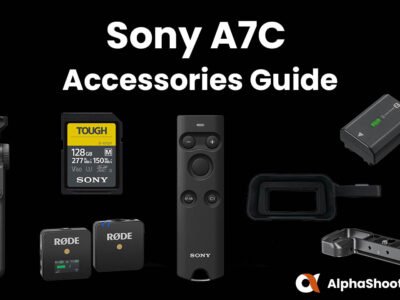


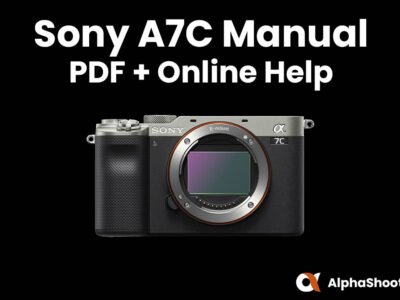


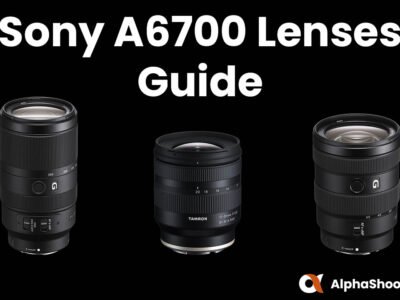
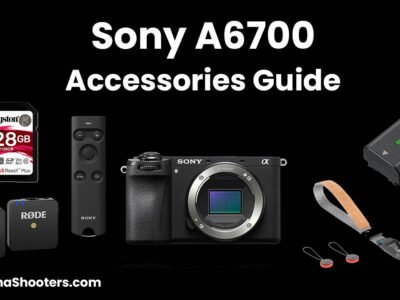


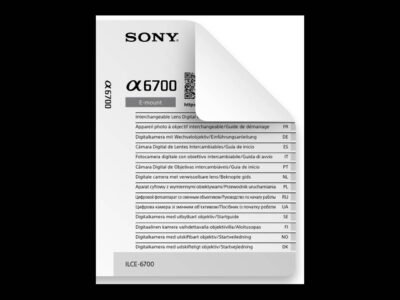
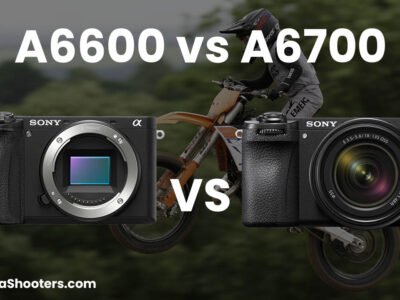

Such a great effort and extremely detailed comparison!
Big thanks!
Reading this you have basically convinced me that going for the A6700 is the wiser choice for a family/travel/non-pro user.
There is only ONE last point. In Europe both A7C and A6700 are now sold at almost the same price.
I don’t intend in gathering many lenses, and I still find the argument of going to A6700 stronger.
Do you think A6700 will “age” better than the A7C?
Thanks again!
Thank you Ion. With it being the much newer camera the A6700 will definitely hold its value better than the A7C going forward, especially now that the A7CII is out. You’ll also be able to take advantage of the smaller and more affordable APS-C lens options for the A6700. I’m very tempted to trade my own A6400 in for the A6700, mainly to be used as my family/travel camera.